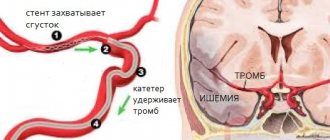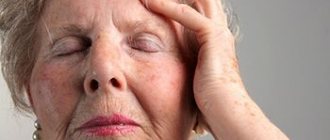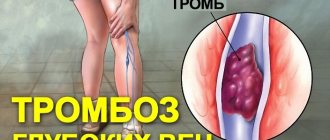Blood and vessels, Nicotine
Smoking tobacco has a particularly negative effect on the heart and blood vessels. The prevalence of addiction is one of the reasons for the high mortality rate from vascular and heart diseases. Nicotine disrupts hematopoietic processes and changes the rheological characteristics of blood. In the article, the reader will learn about how nicotine affects the blood and blood vessels.
How does blood composition change when smoking?
Nicotine negatively affects blood composition. In a smoker, hematocrit increases, the content of red blood cells, leukocytes, platelets and hemoglobin changes. The resulting changes in the blood increase the risk of developing cardiovascular pathologies.
Change in hemoglobin level
The role of hemoglobin is the delivery of oxygen to the cells and tissues of the body. As a result of smoking, the content of this protein in the blood increases slightly. This is explained by the fact that the body is trying to compensate for the developing oxygen starvation.
In the blood of smokers, approximately 5% of all hemoglobin is converted to carboxyhemoglobin. This chemical compound appears as a result of the reaction of hemoglobin with carbon monoxide. It cannot attach oxygen.
Despite the fact that hemoglobin levels are increased, the body continues to experience hypoxia. This negatively affects the functioning of all vital organs. Due to oxygen starvation, metabolism changes. The risk of blood clots, heart attack and stroke, increases significantly.
Effect on red blood cells
Chronic smoking affects red blood cell levels. For a smoker, this figure increases by about 12%. Nicotine also significantly increases the level of so-called deformed red blood cells.
Against the background of such changes, the indicator of blood plasticity increases. The tissues experience a lack of oxygen, despite the fact that the number of red blood cells is significantly higher than normal.
Due to erythrocytosis, the volume of circulating blood increases and its viscosity increases. The patient may develop headaches and his blood pressure increases significantly. The consequences of such changes are damage to the blood vessels of the legs and the development of obliterating endarteritis, heart attack or stroke.
In a smoker, the rate of red blood cells increases.
Change in red blood cell count
Nicotine increases the number of white blood cells. On average, their indicators increase by 10–11%. An increase in the level of these formed elements leads to leukocytosis.
A detailed study of leukocytes shows damage to parts of their DNA. A change in blood composition indicates that a person’s immune system is affected.
The leukocyte formula of a smoking person changes towards neutrophilia and monocytosis. This can cause symptoms such as increased fatigue and increased body temperature.
Platelets
These blood cells are responsible for clotting processes. Nicotine helps these cells stick together. As a result of smoking, the platelet count gradually increases. Despite this, the cells do not perform their functions due to signs of dystrophy.
Against the background of chronic nicotine intoxication and platelet aggregation, swelling of the vessel walls occurs. Changes in blood composition ultimately lead to the development of cardiovascular diseases.
Glucose level
Nicotine increases glycemic levels. This effect is more noticeable in people with diabetes. The reason for the increase in glucose levels is the intense formation of dopamine, norepinephrine, adrenaline, serotonin and other stress hormones. And the body reacts to stress in no other way than by increasing sugar levels.
High glucose levels cause blood vessels to constrict and overwork the heart. Such changes lead to the formation of blood clots and the rapid progression of cardiovascular diseases with a high risk of death.
Changes in cholesterol levels
Nicotine increases cholesterol levels. This contributes to the development of atherosclerosis. Against the background of this disease, blood pressure rises and oxygen supply to tissues and organs deteriorates.
The effect of smoking on the human body
Smoking, undoubtedly, has a detrimental effect on all systems of the body, but a description of all the effects of smoking on the smoker’s body would result in a separate medical reference book. Therefore, we will consider only the most basic.
A cigarette is poison in its purest form. Contains about 4,000 chemical compounds, and tobacco smoke contains about 5,000, of which approximately 60 cause cancer.
Nicotine. We have heard since childhood that a drop of nicotine kills a horse. When smoking a cigarette, you can “consume” from 0.1 to 1.8 mg of nicotine and, according to the “horse” scheme, go to the cemetery after the first pack. In fact, nicotine is not a carcinogen. First of all, it is a psychoactive substance that is addictive.
When smoked, nicotine causes the arteries to narrow, thereby making it difficult for oxygen carried in the blood to reach the heart, brain, lower extremities and other organs. Moreover, nicotine acts quickly, constricting blood vessels within a minute after the first puff. The normal lumen of blood vessels is not restored soon. Therefore, a smoker often constantly keeps his blood vessels in a spasmodic state.
In addition, nicotine, entering the bloodstream, irritates the adrenal glands, which release the hormone adrenaline into the blood, which also constricts blood vessels and increases blood pressure. The constant flow of adrenaline into the blood causes persistent changes in the vascular walls.
The effects of nicotine are also characterized by decreased appetite, impaired stomach function, and a sharp decrease in the body’s saturation with vitamin C, which does not normalize even with the introduction of large doses of ascorbic acid.
Nicotine has a detrimental effect on sexual and reproductive functions, vision and hearing.
Carbon monoxide or carbon monoxide is a poisonous compound found in tobacco smoke.
Flowing through the smallest vessels of the lungs, the blood gives off carbon dioxide, which we exhale, and absorbs oxygen from the air, which is then distributed to all organs and tissues. Carbon monoxide in tobacco smoke has a hundreds of times greater affinity for hemoglobin than oxygen. Therefore, it displaces oxygen from its connection with hemoglobin, forming carboxyhemoglobin, and this interferes with the normal delivery of oxygen to the brain and other organs that need it. As a result, smokers develop chronic oxygen starvation, which affects the cardiovascular system and other organs and tissues.
Tobacco tar is a respiratory tract irritant and contributes to the development of chronic bronchitis, bronchial asthma, and emphysema. But the worst thing is that it is a strong carcinogen that can suppress antitumor immunity and damage the DNA of cells, leading them to a malignant state. Therefore, smoking often leads to cancer.
Dozens of different alcohols, aldehydes, ketones, and phenols contained in tobacco smoke have a harmful effect on the respiratory tract. Acrolein, formic and acetic acids, which have a strong irritating effect, and other substances cause inflammation of the mucous membranes lining the bronchial tree and the deeper layers of the bronchial wall.
This is not a complete list and characteristics of those poisons that are part of tobacco smoke.
Smoking causes the greatest harm to the cardiovascular, respiratory, and nervous systems, and, finally, is a factor that provokes the appearance of cancerous tumors.
Smoking and the cardiovascular system.
The delivery of oxygen to the heart muscle is sharply impaired due to the blocking of blood hemoglobin by carbon monoxide from tobacco smoke. This leads to serious damage to the heart and blood vessels.
Smoking increases blood pressure: blood vessels constrict, forcing the heart to work harder.
Smoking increases blood cholesterol levels. Fats accumulate in the arteries supplying the heart and become blocked. As a result, myocardial infarction. Smokers have a 4-5 times higher risk of myocardial infarction than non-smokers. If a smoker has high blood cholesterol and high blood pressure, the risk of developing a heart attack increases 8 times.
In people who smoke, cerebral stroke (acute cerebrovascular accident) is recorded 4-8 times more often than among non-smokers and former smokers.
Tobacco smoking is considered by doctors in all countries as the main cause of such a serious disease as obliterating endarteritis of the vessels of the lower extremities (obliteration - closure, endarteritis - inflammation of the inner lining of the artery). This disease occurs 9 times more often in smokers than in non-smokers.
Smoking and respiratory tract.
Tobacco smoking is a major risk factor for respiratory diseases: chronic bronchitis, chronic obstructive pulmonary disease, pneumonia, lung cancer.
Chronic bronchitis in smokers is registered 5-7 times more often than in non-smokers. Chronic bronchitis is manifested by a cough with sputum. In some patients, cough with sputum is the only symptom, while others have complaints of difficulty breathing or shortness of breath. The air we breathe must be purified before it reaches the lower part of the lungs. This function is performed by mucus, a sticky liquid found in the nose and upper respiratory tract. The mucus traps dirt and bacteria, while tiny hairs called cilia drain mucus from the lungs into the nasal cavity and throat. Resin, settling in the lungs, irritates the respiratory tract, mucus secretion increases, and the cilia no longer cope with their task, so mucus, dirt and bacteria remain in the lungs.
COPD is a chronic obstructive pulmonary disease characterized by progressive narrowing and destruction of the bronchial tree and pulmonary alveoli. The main cause of COPD is smoking. Heavy smokers have a 30 times higher risk of developing COPD compared to non-smokers. COPD develops slowly over 10-15 years. Anyone who starts smoking early runs the risk of becoming seriously ill at the most productive age - at 30-40 years old. The first manifestation of the disease, which runs latent for a long time, is a chronic cough, which is also called smoker’s cough. Shortness of breath gradually increases, any effort - climbing stairs, light jogging - causes difficulty breathing. Even later, a person begins to choke even when dressing, washing, etc. It usually takes from 20 to 40 years for the development of pronounced COPD. Approximately 90% of COPD deaths are attributed to smoking.
Emphysema refers to an abnormality of the alveoli where the tissue around the alveoli changes, making them dilated and appearing like holes in the lungs on an x-ray (resembling Swiss cheese). The main symptom is shortness of breath. There is a cough, but it is less pronounced than with chronic bronchitis. The chest becomes barrel-shaped.
The chronic nature of these diseases means that those who develop them can live for many years, but with some degree of discomfort and disability. In the worst case scenario, people suffering from these diseases may become dependent on life-sustaining systems, such as constant oxygen treatment.
The effects of smoking on women's, men's and children's bodies.
The effect of smoking on the male body.
Nicotine inhibits the spinal centers of erection and ejaculation, and also has a vasoconstrictor effect, which results in weakened erection and premature ejaculation. The quantity and quality of sperm decreases. As a result, the chance of developing impotence and prostate cancer increases significantly.
The effect of smoking on the female body.
Women are more susceptible to the risks associated with smoking than men. In addition to external manifestations in the form of poor skin color, early aging and other adverse consequences, women pay with their health and the ability to bear and give birth to a healthy child. It has long been no secret that women who smoke are more likely than non-smokers to have problems conceiving and bearing children. In addition, a smoking expectant mother greatly risks the normal development of her child.
Tobacco ingredients suppress the production of female hormones, and therefore women who smoke lose their femininity and grace over time.
Smoking has an antiestrogenic effect. The menstrual cycle may be disrupted, and premenstrual syndrome will be moderate to severe. Another result of smoking in women can be early menopause and the development of osteoporosis, a disease associated with damage (thinning) of bone tissue, leading to fractures and bone deformities. Women smokers who take oral contraceptives have a much higher risk of heart disease than nonsmokers, as well as a much higher risk of stroke, hardening of the arteries, and death from aortic aneurysm.
The effect of smoking on the body of a teenager.
The child's body is not fully developed and is very sensitive to tobacco poisons. First of all, in the growing body, against the background of smoking, disorders develop in the central nervous and cardiovascular systems, metabolic processes, and vitamins are poorly absorbed. All this leads to inhibition of general development, mental disorders, slowed growth, hearing impairment, and diseases such as anemia and myopia.
Smoking worsens skin condition.
48% of smokers and 8% of former smokers have pale gray skin and more pronounced wrinkles than non-smokers. Components of tobacco smoke (especially carbon monoxide) accelerate the aging process in the body and cause the skin to suffer from oxygen starvation, acquire an unhealthy gray color and emit an unpleasant odor.
How smoking destroys beauty.
- When tobacco is burned, soot, tar and tobacco smoke are formed. When you inhale smoke, tobacco tar settles on your teeth, making them dark and lacking in natural shine. Hot tobacco smoke spoils not only the appearance of teeth, but also the tooth enamel itself, destroying it and opening the way for pathogens that cause caries. No toothpastes, mouth rinses or deodorants can mask bad breath.
- Substances contained in cigarettes make hair dull and can cause brittleness and hair loss. In addition, hair perfectly absorbs the smell of tobacco, which no perfume can displace.
- The skin of the hands also suffers. It becomes dry and pigmented. Nails turn yellow and dull.
- Smoke affects the vocal cords. As a result, the voice becomes lower and rougher.
- Early aging. As a rule, smokers look much older than their age. The skin becomes loose and wrinkled due to the destruction and degradation of the collagen layer of soft tissue. It takes on an old, earthy hue.
- Due to the fact that smokers squint all the time, trying to protect the eyeball from smoke (this is a natural mechanism), the first wrinkles appear in the corners of their eyes very early.
The result is a rather sad picture. A rough voice, lifeless wrinkled skin, bad breath and hair, bad teeth, dull eyes, constant cough - this is what a smoking woman looks like. She made cigarettes a part of her life. But what did you get in return?
Smoking and malignant tumors.
Approximately 85% of lung cancer cases can be linked to smoking. The risk of lung cancer increases the more cigarettes you smoke per day, the longer you smoke, the greater the amount of smoke you inhale, and the higher the tar and nicotine content in cigarettes.
In the early stages and sometimes even later, lung cancer may not show any symptoms. But when its signs are detected, the disease is often very advanced. Only less than 10% of patients remain alive 5 years after being diagnosed with lung cancer, while the majority die within the first five years. Signs of lung cancer include chronic cough, wheezing, hemoptysis, loss of weight and appetite, shortness of breath, chills for no reason, recurring acute respiratory infections such as bronchitis or pneumonia, and chest pain.
Lung cancer kills more people worldwide than any other type of cancer, and in many countries more than 90% of these deaths are due to smoking. Among the causes of death associated with smoking, lung cancer is in third place after cardiovascular diseases and chronic obstructive pulmonary disease.
About 30% of cancer deaths are directly related to smoking. Smoking is the main cause of many types of cancer:
- Cancer of the lungs, trachea and bronchi (85%).
- Laryngeal cancer (84%).
- Cancer of the oral cavity, including lips and tongue (92%).
- Esophageal cancer (78%).
- Pancreatic cancer (29%).
- Bladder cancer (47%).
- Kidney cancer (48%).
Tobacco smoking and the neuropsychic state of the body.
When you take your first puff on a cigarette, the toxic substances of tobacco smoke enter the lungs, then they penetrate the blood and after a few seconds end up in the brain, affecting it. Over time, in order to increase the vitality of the body, a person has to resort to cigarettes more and more often, and puff deeper and deeper. A cigarette becomes necessary for such a person; in its absence, inconvenience and annoyance arise. Gradually, increased fatigue and “unexplained” weakness develop that accompany every smoker.
A smoker with many years of experience has a deteriorating memory, absent-mindedness, and forgetfulness. Many smokers, and all during the period of abstinence from smoking, have astheno-neurotic symptoms, and 12.5% have psychopathic-like states. The former manifest themselves in the form of increased irritability, lethargy, absent-mindedness, and general weakness; the second - in the form of mood disorders, anger and malice.
Myths about smoking
Myth No. 1: Smoking invigorates and improves performance.
Physiologist I.P. Pavlov established at the beginning of the century that tobacco smoke has a two-phase effect on the central nervous system. First, the blood vessels of the brain expand, which is felt by the person as a surge of strength. But this is necessarily followed by a second phase, opposite in effect and longer. Short-term vigor is replaced by long-term fatigue. Fatigue, bad mood, and a feeling of general exhaustion return - and a new dose is required. And the further you go, the more nicotine you need to cheer yourself up. In the West, some employers refuse to hire people who smoke, believing that the work process suffers from constant smoking breaks.
Myth #2: Smoking helps relieve anxiety and reduce stress.
In fact, the components of tobacco do not relax, but simply “slow down” the most important areas of the central nervous system. But, having gotten used to a cigarette, a person practically cannot relax without it. The elimination of anxiety and irritability by nicotine, observed with systematic smoking, is largely explained by mental and physical dependence on it. It turns out to be a vicious circle: both the occurrence and cessation of stress become dependent on smoking. The acute need for nicotine is an additional source of stress for the smoker. The feeling of relief resulting from nicotine use is usually perceived as “relaxation.”
Myth No. 3: Smoking is just a bad habit, which is easy and simple to give up.
This is not a bad habit, but a disease, manifested by dependence on the components of the smoke of smoldering tobacco, i.e. one of the forms of substance abuse. This disease is presented in the International Classification of Diseases, 10th revision (ICD-10) under the heading of mental and behavioral disorders, section of addictions.
Myth #4: Cigars and pipes are safer to smoke because they don't cause inhalation.
This is only true for lung cancer. The risk of developing cancer of the mouth, pharynx, esophagus and stomach is much higher with pipe smoking than with cigarette smoking. Pipe smoking increases the risk of cancer in the following organs:
- upper digestive tract – 8.7 times
- oral cavity and pharynx 12.6 times
- esophageal cancer – 7.2 times
Myth No. 5: Light cigarettes are not as harmful as regular cigarettes.
Constantly using light cigarettes, smokers puff more often and deeper, which can subsequently lead to lung cancer.
Myth No. 6: Hookah is not harmful to health.
In one hour of hookah smoking, 100–200 times more smoke passes through the lungs than when smoking a cigarette. One hookah refill contains 6.25 mg of nicotine; for comparison, 1 cigarette contains only 0.8 mg of nicotine. In 45 minutes of hookah smoking, more carbon monoxide (CO) enters the body than is contained in one pack of cigarettes!
Myth No. 7: It makes no sense to quit if you have been smoking for a long time.
Even after smoking for many years, quitting significantly reduces the risk of developing myocardial infarction, other cardiovascular diseases and cancer.
IT'S NEVER TOO LATE TO QUIT SMOKING!
According to information from WOCMP website
What problems does a smoker have related to blood circulation?
With prolonged smoking, a person's blood vessels and heart are affected. A smoker experiences the following symptoms:
- significant increase in blood pressure;
- increased heart rate;
- persistent narrowing of arterioles;
- deposition of cholesterol plaques on the inner walls of blood vessels;
- formation of blood clots - thrombi;
- increasing blood viscosity due to platelet aggregation;
- disruption of metabolic processes, which, in turn, lead to increased thrombus formation and hardening of blood vessels;
- a decrease in the concentration of prostacyclin, a substance on which the dilation of blood vessels and capillaries depends.
All of these phenomena lead to the development of a large number of diseases that require long-term treatment. Chronic diseases worsen the quality of life of patients and lead to aging of the body.
Smoking and hemoglobin
Smokers often have elevated hemoglobin levels. There is no scientific explanation for this yet, but scientists suggest that the increase in hemoglobin is the body’s defense mechanism when the oxygen content in the lungs is low. In their opinion, these mechanisms operate by analogy with the processes of the inhabitants of the highlands.
Sometimes smoking can hide a person's existing iron deficiency anemia. In these cases, the natural level of hemoglobin in a person is low, but with active smoking it artificially rises to normal levels, and the lack of iron in the body cannot be recognized in time.
Damage to blood vessels due to smoking
Nicotine has 2 stages of action. During the first, short-term stage, the muscular wall of the blood vessels relaxes, causing the lumen of the capillaries to increase. Against the background of expansion of the lumen of the arteries, the rhythm of heart contractions slows down. The person feels a pleasant state of relaxation and his well-being improves somewhat.
Then comes the phase of pathological changes in the functioning of the circulatory system. Due to the increased synthesis of neurotransmitters such as dopamine, adrenaline and norepinephrine, the heart rate increases markedly. The walls of the blood vessels narrow and they spasm. Against the background of these phenomena, blood pressure increases. This condition is especially dangerous for people with arterial hypertension: they may develop a life-threatening hypertensive crisis.
Complexes with this research
Advanced male anti-aging diagnostics Advanced monitoring of key indicators in men aged 40+ RUR 25,030 Composition
Advanced anti-aging diagnostics in postmenopause Advanced monitoring of age-related changes during the postmenopausal period RUR 21,510 Composition
Check-up No. 1 for children and adolescents Annual preventive examination program RUB 7,150 Composition
IN OTHER COMPLEXES
- Advanced women's anti-aging diagnostics RUR 21,130
- Nutritionist recommends RUB 4,930
- Diabetes monitoring RUB 1,900
- For those at risk of COVID-19 RUB 2,880
- The key to health RUB 1,220
How does blood circulation in the brain change in a smoker?
Neurons are the most sensitive to the oxygen content in the blood, as well as changes in rheological properties. When smoking, patients develop:
- headaches;
- noise in ears;
- blurred vision;
- memory impairment;
- feeling weak and overwhelmed;
- decreased performance.
Over time, a person develops transient cerebral circulatory disorders. This is not a stroke yet. Such a change in cerebral circulation can be prevented if you give up the bad habit in time, start eating right and moving enough.
During a stroke, an acute disturbance of cerebral circulation occurs. An ischemic stroke occurs when the arteries that supply the brain become blocked. A hemorrhagic stroke occurs when there is bleeding in the brain.
Also, poor circulation in the brain can cause encephalopathy (progressive diffuse brain damage) and dementia.
Nicotine damage to the vessels of the lower extremities
Long-term smoking causes the development of obliterating endarteritis. With this disease, persistent narrowing of the arteries develops. Attacks of spasms are initially transient and reversible. Over time, narrowing of blood vessels occurs much more often and lasts longer. The toes are the first to be affected. In this case, the following symptoms are observed:
- whitening of the skin and feeling of cold;
- tingling and numbness in the lower extremities;
- the appearance of attacks of intermittent claudication (the patient is forced to periodically stop while walking to normalize the condition);
- fatigue.
Over time, these phenomena progress. The patient develops tissue atrophy and gangrene.
The use of tobacco products leads to changes in blood composition and the development of cardiovascular diseases. An experienced smoker increases the risk of developing stroke, heart attack, arterial hypertension, and atherosclerosis. Quitting smoking is the only way to prevent life-threatening diseases.











